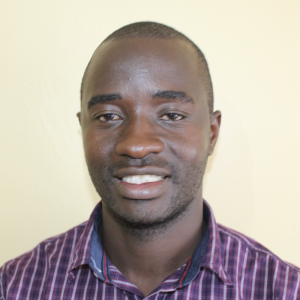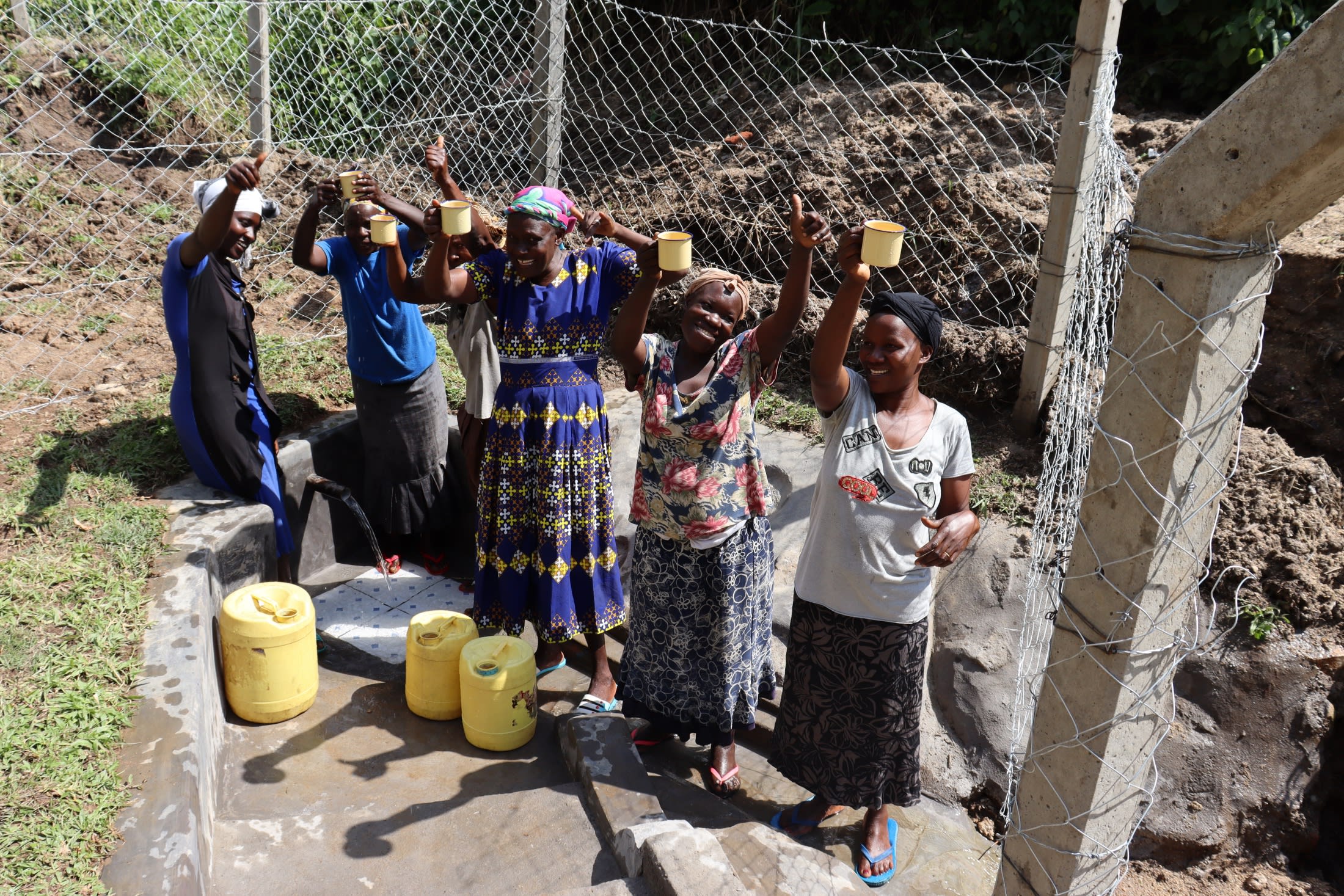The Elunyu Community of 280 people relies on the Wilson Nzosi Spring as its primary water source. Other sources, like protected dug wells (without hand pumps) and rainwater collection, are insufficient options as they are seasonal, and do not produce enough water during the dry season.

The spring is not ideal for several reasons, but it is the only choice when community members require water. It is open to contaminants brought by human and animal activities, so the threat of illness is ever-present. People suffer from stomachaches, diarrhea, and typhoid. All fingers point to this water point that the majority rely on for drinking water.
"I have been anxious and worried about possibly getting waterborne diseases. Children do play at the water point. I always leave everything to God, because [I] am a bit limited to provide a better water solution to my family," said Roseline Khaoya (pictured below), a 32-year-old peasant farmer.

Danis K., age 12 (pictured below), shared his experience with getting sick because of unclean water. "I do have recurring stomachaches. During such moments I also vomit a lot. This water could be the reason, because my family depends on it for drinking."

The collection area is very shallow, and people must wade into the water (the same water they are collecting to drink) to crouch down close to the surface. Since there is no discharge pipe, they lay their jugs in the water or use a scooping container to fill it, which is time-consuming and causes further contamination. People prefer collecting water very early in the morning when it has not been disturbed and seems clear, mistakenly thinking it is clean.
The spring is in a low area where rain pours all sorts of pollutants into the water, exacerbated by the soil around being very loose.

The path to the spring is very steep and gets quite slippery, especially when it rains, so at times people have fallen and injured themselves. Often they are in a rush because they have waited in long lines and wasted valuable time due to overcrowding.
This community needs its primary water source, the Wilson Nzosi Spring, protected so it is easier to access, they can be healthier, and they will have more energy to devote to other parts of their lives.
What We Can Do:
Spring Protection
Protecting the spring will help provide access to cleaner and safer water and reduce the time people have to spend to fetch it. Construction will keep surface runoff and other contaminants out of the water. With the community's high involvement in the process, there should be a good sense of responsibility and ownership for the new clean water source.
Fetching water is a task predominantly carried out by women and young girls. Protecting the spring and offering training and support will, therefore, help empower the female members of the community by freeing up more of their time and energy to engage and invest in income-generating activities and their education.
Training on Health, Hygiene, COVID-19, and More
To hold trainings during the pandemic, we work closely with both community leaders and the local government to approve small groups to attend training. We ask community leaders to invite a select yet representative group of people to attend training who will then act as ambassadors to the rest of the community to share what they learn. We also communicate our expectations of physical distancing and wearing masks for all who choose to attend.
The training will focus on improved hygiene, health, and sanitation habits in this community. We will also have a dedicated session on COVID-19 symptoms, transmission routes, and prevention best practices.
With the community's input, we will identify key leverage points where they can alter their practices at the personal, household, and community levels to affect change. This training will help to ensure participants have the knowledge they need about healthy practices and their importance to make the most of their water point as soon as water is flowing.
Our team of facilitators will use a variety of methods to train community members. Some of these methods include participatory hygiene and sanitation transformation, asset-based community development, group discussions, handouts, and demonstrations at the spring.
One of the most important issues we plan to cover is the handling, storage, and treatment of water. Having a clean water source will be extremely helpful, but it is useless if water gets contaminated by the time it is consumed. We and the community strongly believe that all of these components will work together to improve living standards here, which will help to unlock the potential for these community members to live better, healthier lives.
We will then conduct a small series of follow-up trainings before transitioning to our regularly scheduled support visits throughout the year.
Training will result in the formation of a water user committee, elected by their peers, that will oversee the operations and maintenance of the spring. The committee will enforce proper behavior around the spring and delegate tasks that will help preserve the site, such as building a fence and digging proper drainage channels. The fence will keep out destructive animals and unwanted waste, and the drainage will keep the area's mosquito population at a minimum.

 Protected Spring
Protected Spring
 Rehabilitation Project
Rehabilitation Project







































